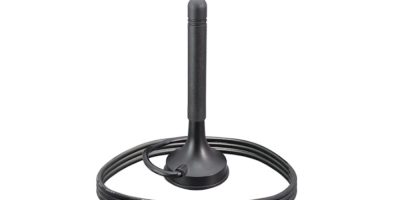Smart home solutions increase consumers’ convenience while reducing energy consumption and lowering consumers’ carbon footprints. However, different device ecosystems, products and protocols have made implementing a truly connected, secured smart home difficult until now. The Connectivity Standards Alliance’s (CSA) newly released Matter 1.0 specification helps alleviate these challenges by offering one unified standard for device makers to follow for many smart home applications including smart locks, lighting, thermostats, security systems, sensors and media devices. Infineon Technologies AG (FSE: IFX / OTCQX: IFNNY), a world leader in IoT and power solutions, has joined CSA and more than 280 companies to pioneer the game-changing Matter standard to make ease-of-use, interoperability, security and sustainability a reality in the smart home.
“Our homes are the center of our daily activities, from work to leisure,” said Thomas Rosteck, Division President Connected Secure Systems at Infineon. “We believe that having one standard solves the fragmentation of the smart home market, which will be the key in opening doors to drive better connectivity, digitalization and decarbonization in this market. The Matter initiative and Infineon’s integrated Matter solutions will allow consumers to customize, connect and control their smart home experience in a simple and secure way, while optimizing energy usage in the most effective manner.”
Matter 1.0 will accelerate adoption of smart home solutions by proving interoperability and backwards-compatibility of devices from different brands and operating systems.
Infineon leaders sit on the CSA board, underscoring the company’s commitment to advancing global standards and helping to shape the future of IoT in the smart home. The world leader in hardware-based security solutions, also leads major security teams covering topics such as encryption, device attestation and integrity as well as security certification of smart home devices.
Smart Home market to grow rapidly
According to market research firm ABI Research, by 2030, more than 1.5 billion Matter certified devices will ship annually (Source: ABI Research, Smart Home Bi-Annual Update, March 2022). In addition, over that period, a vast range of consumer robotics, smart appliances, and other emerging smart home device types are expected to be drawn into smart home system engagement.
Beyond convenience and automation, connected devices and services in the smart home will provide energy-efficient solutions to solve social and environmental challenges.
Within total worldwide electricity consumption, residential buildings make up 29 percent. Space cooling, heating and refrigeration are among the largest power consumers. Here, the interconnection of smart things opens up great potential for reducing energy consumption. For example, smart home networks can learn users’ personal temperature preferences in different situations to adapt them automatically. Sensor-based controls can turn off lights, heating and air conditioning when no one is in the room. And intelligent smart home networks can start washing machines or car charging when renewable energies are available.
With one out of six people in the world being aged 60 years or over by 2030, smart home solutions can also help seniors to stay independently and more comfortably in their own homes.
Elevating consumer experience and sustainability with Matter solutions
Infineon’s leading technology portfolio of right-fit and ready-to-use solutions accelerates the creation of innovative smart home products that meet today’s and tomorrow’s demand for connected, smart, safe and energy-efficient homes – ensuring best possible user experience and enabling new services.
Our Matter solutions include:
- The new PSoC® 62S2 Wi-Fi BT Pioneer Kit helps developers and engineers achieve reliable, ultra-low power Matter over Wi-Fi solutions and helps them get to market faster.
- The combination of PSoC™ 6x ULP MCU and AIROC™ CYW43xx Bluetooth/Wi-Fi SoCs supports a very reliable, low power implementation of Matter over Wi-Fi edge devices, while provisioning over Bluetooth/Bluetooth Low Energy.
- The high-performance, low-power AIROC™ CYW30739 multi-protocol SoC (Bluetooth Low Energy 5.3, IEEE 802.15.4 ) is one of the first to complete Thread 1.3 certification, the foundation for Matter over Thread devices.
- Matter-compatible OPTIGA™ security solutions easily integrate into embedded systems to protect the confidentiality, integrity and authenticity of information and devices. The solutions scale from basic authentication chips to sophisticated implementations.
All these solutions leverage the ModusToolBox™ development platform to shorten IoT developers’ time-to-market. Further information is available at www.infineon.com/connectedhome







